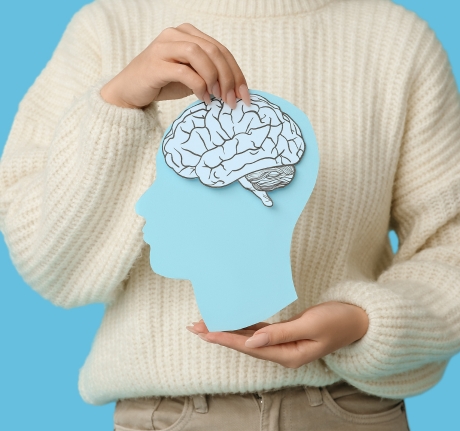
Transforming Your Life: How to Use Neuroplasticity to Break Free from Old Habits
Stuck in Old Habits? Here’s How Neuroplasticity Can Help You Break Free
We’ve all been there. You know that feeling when you want to break a bad habit, but it feels like you’re constantly fighting an uphill battle? Whether it’s stress, procrastination, or just unhealthy lifestyle choices, old habits tend to stick around way longer than we’d like them to.
So, what’s going on in our brain? Well, the good news is that there’s actually a way out. Thanks to something called neuroplasticity, we can start rewiring our brain and ditching those negative patterns once and for all. Think of it like giving your mind a fresh start, where old imprints that no longer serve you can be wiped away, and healthier habits can take root.
But how exactly does neuroplasticity work, and how can we use it to break free from our old habits? Let’s get into it.
What Is Neuroplasticity?
Put simply, neuroplasticity is the brain’s incredible ability to change and adapt. When you think, feel, or do something over and over, your brain forms pathways that make it easier to repeat that action. This means that habits, whether good or bad, are just the result of neural connections in your brain.
Here’s the thing: just because you’ve been stuck in a bad habit for years doesn’t mean you’re stuck forever. Neuroplasticity proves that your brain is always changing, and with the right effort, you can rewire it. So, yes, you can break those bad habits and replace them with healthier, more positive ones.

What Do Mental Samskaras Have to Do with Neuroplasticity?
In Indian philosophy, we talk about something called mental samskaras, which are basically the mental imprints or tendencies created by past experiences, thoughts, and actions. These samskaras shape the way we think and behave, often leading us to repeat patterns over and over.
Interestingly, neuroplasticity and samskaras are very much aligned. Just like samskaras create mental “tracks” that we tend to follow, neuroplasticity works by creating new tracks in our brain that can override old, limiting ones. In a way, we’re learning how to clear out outdated thought patterns and replace them with new, healthier ways of thinking.
Why Is It So Hard to Break Old Habits?
The reason old habits are so hard to break has a lot to do with how our brain works. The more we do something, the stronger the neural pathways associated with that action become. Over time, these pathways get reinforced, and the behavior becomes automatic.
For instance, you’ve probably noticed that certain things trigger automatic reactions—like grabbing a snack when you’re stressed or procrastinating when you have a big task ahead. That’s because your brain has formed pathways that make these behaviors easier to do than the healthier alternatives.
The Emotional Impact of Old Habits:
- Stress and Burnout: If you’re stuck in a cycle of overwork or poor self-care, it’s easy to burn out. These habits often result from old ways of coping with stress.
- Emotional Turmoil: Negative thought loops, like self-criticism or fear, can keep you stuck in unhelpful mental states.
- Physical Health Issues: Habits like poor diet, lack of exercise, or inadequate sleep can take a toll on your body over time.
Breaking these patterns can feel nearly impossible. But, here’s the good news: your brain can change, and so can you.
How Neuroplasticity Can Help You Break Free
Neuroplasticity offers a way to retrain your brain and break free from old habits. Here’s how it can help:
Shifting Negative Thought Patterns:
If you’ve been stuck in a cycle of negative thoughts—whether it’s anxiety, stress, or self-doubt—neuroplasticity shows us that it’s possible to rewrite those patterns. You can replace them with more positive, empowering ways of thinking.
Building New Habits:
- Positive habits work the same way negative ones do. When you consistently repeat a good habit, your brain starts forming new neural connections that make it easier to repeat the behavior. So, instead of mindlessly scrolling through social media, you could train your brain to reach for a book, exercise, or meditate.
Mindfulness:
One of the best ways to tap into neuroplasticity is by practicing mindfulness. When you’re mindful, you’re aware of your thoughts and behaviors, and that awareness gives you the power to change your automatic reactions. It’s like putting the brakes on those old habits before they even start.
Reframing Your Experience:
When you experience something stressful or challenging, neuroplasticity allows you to reframe it. Let’s say you’ve always struggled with public speaking. With the right mindset and practice, you can reshape the way your brain reacts to that anxiety, eventually turning it into confidence.

Real Transformations, Real Results

Practical Steps to Rewire Your Brain for Positive Change
Now that you know how neuroplasticity works, let’s take a look at some simple ways you can start rewiring your brain and breaking free from old habits.
Practice Mindfulness Every Day:
Even just 5–10 minutes of mindfulness meditation can make a huge difference in how you respond to stress and old habits. Focus on your breath, and notice when your mind starts wandering toward old patterns. Gently bring it back.
Start Small:
- Trying to overhaul your entire life at once is a surefire way to burn out. Instead, focus on one habit at a time. For example, if you’re trying to eat healthier, start by swapping out one unhealthy meal each day.
Use Positive Affirmations:
- Affirmations are a simple but effective tool to rewire your brain. Every morning, tell yourself something positive: “I am focused,” “I am calm,” “I am making positive changes.” These small words can have a big impact over time.
Change Your Environment:
Your surroundings play a huge role in shaping your habits. Set up your environment to support your new habits—whether it’s creating a designated workspace or clearing out unhealthy food from your pantry.
Celebrate Small Wins:
Every time you make progress, no matter how small, take a moment to celebrate. Whether it’s resisting a temptation or sticking to a workout routine, acknowledging your successes reinforces the new neural pathways you’re forming.
Need Physiotherapy Help? Reach Out to Us
Conclusion: Embrace the Power of Neuroplasticity and Transform Your Life
Breaking free from old habits isn’t about instant change. It’s a gradual process of reprogramming your brain to build new, healthier neural pathways. By understanding how neuroplasticity works and using tools like mindfulness, affirmations, and small habit changes, you can begin to reshape your life for the better.
Just as mental samskaras can be cleared with conscious effort and discipline, your brain can be rewired to overcome ingrained habits. With patience and consistency, you can create lasting change and cultivate a life that aligns with your highest potential.
Ready to start your transformation? Take the first step today by incorporating these practical tools into your routine. Want more guidance on how to rewire your brain for success? Explore additional resources, workshops, and coaching options on our website to support you on your journey.
Help Me Help You!
If you’re ready to start healing those emotional wounds and rewiring your brain, I want to help you. That’s why I’m excited to announce that the Self-Healing Starter Kit will be launching soon on my website. This kit is designed to guide you through each of these steps, offering practical tools and insights to help you create lasting emotional wellness.
Stay tuned for the launch of the kit, and in the meantime, visit my website for more content that can support you on your journey to emotional healing. You deserve to feel better, to heal, and to live with greater peace—and it all starts with your brain.
